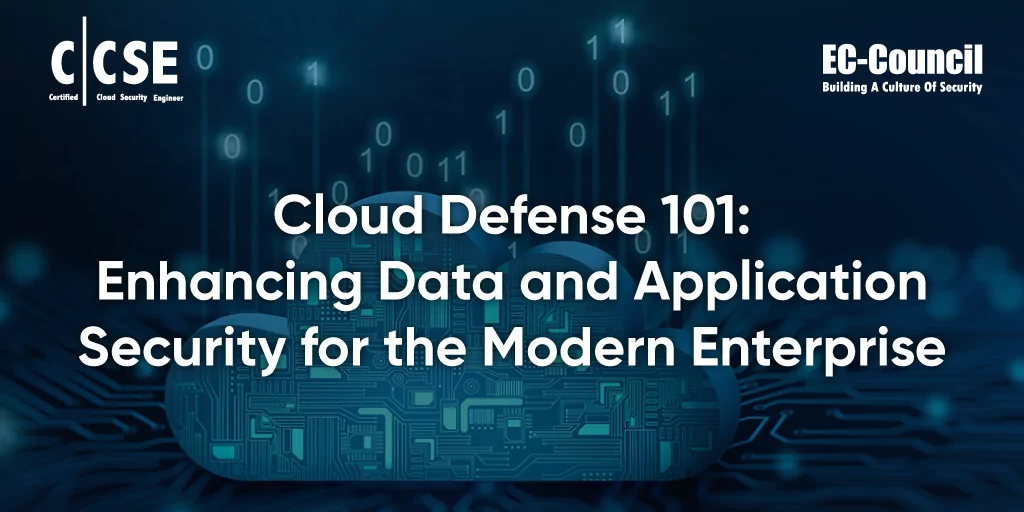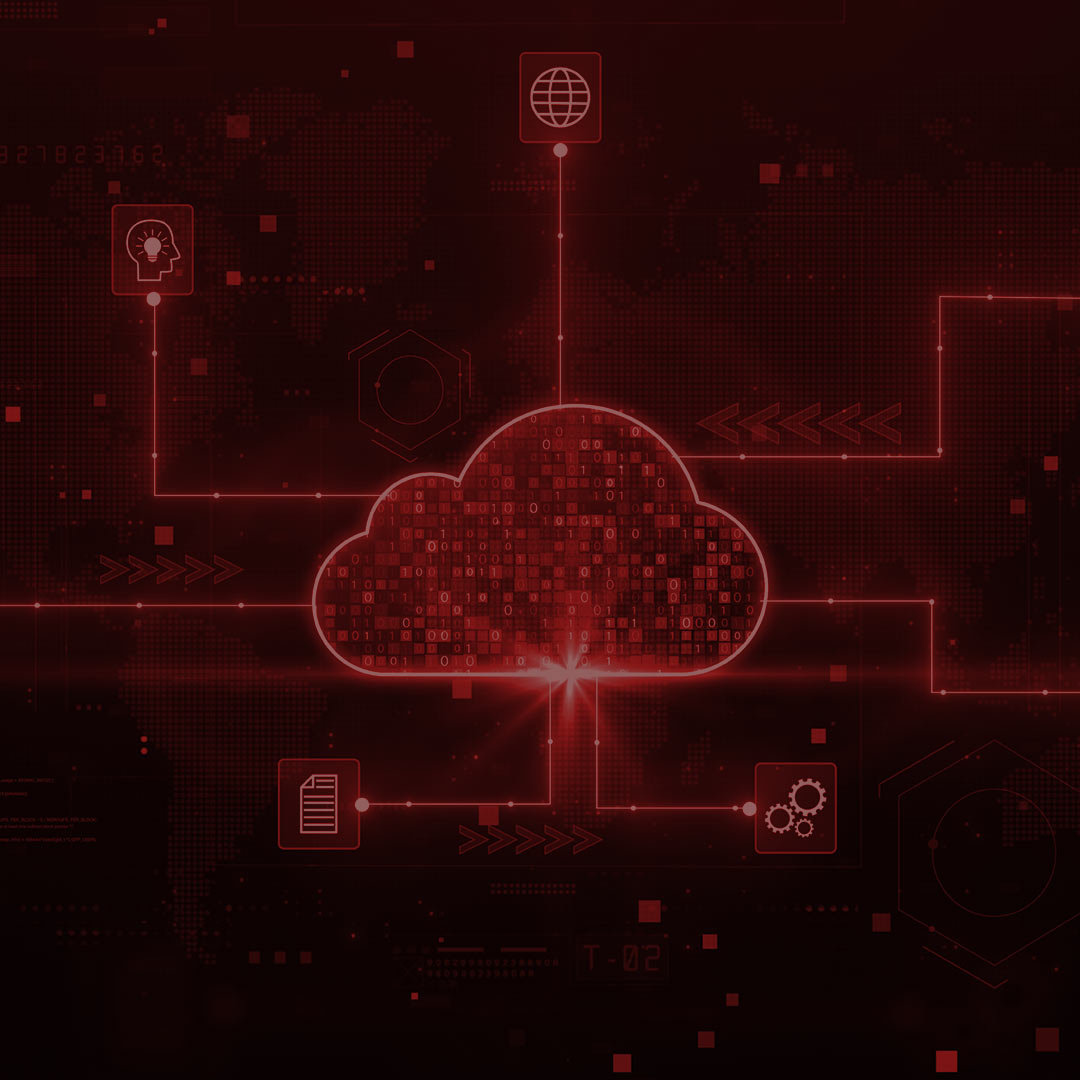Cloud security threats are inevitable due to the scope and breadth of cyber threats. The reliability of the cloud is a huge advantage for businesses, but it also brings new challenges associated with regulatory compliance and data storage. Security has always been a top priority when it comes to cloud computing. The overall need for security controls is one of the primary reasons organizations still face hiccups when migrating toward cloud solutions.
With the enterprise workload being spread across various virtual environments, the security team needs to approach cloud security carefully and look for ways to improve the security posture of applications and data. This article addresses some of the key considerations of which threats persist in cloud applications and data and how businesses can protect their assets, starting from understanding risks, implementing security solutions and frameworks, securing access, standard security management, and much more.
Security Threats for Cloud Data and Application
Though the benefits of the cloud are evident, many organizations still need to learn about the security risks involved. Here are some potential threats that security teams need to be aware of to develop a holistic security solution for their cloud-based applications.
- Misconfigurations: Cloud environments are challenging to manage, particularly in multi-cloud and hybrid environments. Misconfigurations have become one of the leading causes of cloud security breaches. Commonly occurring with authentication mechanisms, misconfiguration impairs identity and access management.
- Bots and Automated Attacks: Bots and malicious scanners are a fact of life when exposing any service to the Internet. As a result, any cloud application must account for these threats by implementing security measures such as firewalls and intrusion detection software (Check Point, 2022).
- Cryptographic Failures: Data security can be compromised by issues such as encryption failures for passwords or in the transport layer, insufficient randomness, weak encryption algorithms, and keys.
- Unsecure Design: Application design is the key to stable operations and security, so it must be managed effectively from the beginning of the software development process. The shift to virtual environments and multi-cloud architectures only increases the pressure on secure design development.
- Broken Authentication: A vulnerability in OWASP’s top 10 list, broken authentication allows for the use of weak passwords, which can be susceptible to brute-force attacks and similar attacks. These stolen credentials can lead to security breaches.
- Data Integrity Failures: Continuous integration and continuous delivery (CI/CD) pipelines can help prevent malware attacks across all connected applications. Any failure to verify the integrity of these channels may lead to malware attacks.
- Social Engineering: A weak human link in the security chain is most frequently targeted for credentials theft.
- Exposed Credentials: The process of account hijacking involves the exposure of credentials, which provides threat actors with access to and authority over a compromised account.
- Account Hijacking: Most of the listed attack vectors attempt to steal data or credentials related to cloud applications. A compromised account can provide threat actors with access to sensitive information and control of cloud assets.
- API Vulnerabilities: As one of the common data-sharing mechanisms, API is a highly targeted element, especially among cloud applications.
- Lack of Visibility into Cloud Environments: Hybrid and multi-cloud environments make it more difficult for security teams to manage cloud security risks due to configuration complexity, monitoring challenges, and access control limitations.
- Misuse of the Cloud Platform: An analogy to phishing activities, open cloud sources can be exploited by attackers to upload malware on online forums using cloud services as a file-hosting solution.
- Inadequate Physical Security Measures: As part of the shared responsibility model, the cloud service provider (CSP) is responsible for the physical security of its assets and should include planning for power outages and natural disasters.
Security Solution and Framework
Security capabilities must be developed to secure a virtual environment with the nature of cloud operations in mind. Data and assets need to be protected end-to-end across multiple cloud-native platforms and hybrid environments. Thus, security teams are encouraged to adopt various solutions and policies to ensure agile security. The possible frameworks that could be adopted to protect cloud-native assets are listed as follows:
- Cloud Access Security: As part of identity-driven security, enforcement and verification points between cloud data and users are deployed to authenticate users and protect traffic with firewalls and intrusion detection mechanisms.
- Web Application Firewalls (WAFs): Web application firewalls (WAFs) are deployed at the network layer to help protect web applications from threats by detecting and identifying abnormal behavior and anomalies signatures.
- Runtime Application Self-Protection (RASP): These solutions are designed to provide more targeted protection for applications than whole-web application firewalls, which protect an organization’s entire web application infrastructure. RASP can detect even unknown attacks based on their impact on the protected application.
- Cloud Penetration Testing: Web application penetration testing (WAPT) is one of the most robust approaches used to assess the security of cloud applications, as it allows security teams to uncover hidden vulnerabilities before threat actors can identify and exploit them. Implementing penetration testing during DevOps allows developers to identify security problems associated with application functionalities (Khasim, 2023). Popular tools for WAPT include Burp Suite, AppScan, Qualys, Metasploit, and Acunetix.
- Cloud Workload Protection Platform (CWPP): This solution provides capabilities for monitoring security threats in cloud workloads and protection against malware on all types of applications deployed across multiple cloud service providers.
- Security Model for DevSecOps: Aimed at incorporating itself during the DevSecOps process, specific models assess the vulnerability or a threat’s potential for damage, reproducibility, exploitability, ease of discoverability, and its impact on users to prioritize their handling. Security implementation in DevSecOps should include parameters and tactics that detect, manage, and prevent faults by developing frameworks that involve inputs from developers and security experts (Kudrati, 2023).
- Web Application & API Protection (WAAP): It is a cloud-native security solution that combines the functionality of different security solutions and frameworks for holistic security for the cloud. It combines WAFs and RASP with other solutions and allows security teams to automate, scale, and monitor its application smoothly.
- Cloud Security Posture Management (CSPM): This framework helps visualize risks, assess threats and respond to incidents in different types of cloud infrastructure. Continuous Security and Privacy Monitoring (CSPM) provides a holistic solution for cloud asset security by enabling continuous compliance monitoring and policy creation for desired states of cloud infrastructure (Alvarenga, 2022).
Cybersecurity Best Practices in the Cloud
Securing cloud applications requires the involvement of different cybersecurity strategies. Implementing best practices in the security policy will not prevent every attack, but it can significantly lower risks and help businesses shore up their defenses. Thus, enterprises aiming at lowering risk should understand and implement these cybersecurity best practices.
- Robust Cloud Security Policy: Developing and implementing an effective cloud security policy that defines access and authentication as well as integrates various security solutions across the entire cloud architecture.
- Identity Access Management (IAM): Cloud applications are designed to be accessed by users from any global location, network, or channel. An Identity and Access Management (IAM) strategy is essential to allow for broader business security processes. A holistic approach to IAM can protect cloud applications and improve the overall security posture of an organization (Snyk, 2021).
- Data Privacy and Compliance: Data privacy, application security, and compliance are crucial for protecting end-users of cloud-native applications. Compliance with other security controls helps protect the privacy of application users.
- Understanding Threat Actors: To formulate effective security policies and actions, it is necessary to understand your adversaries and their modes of operation. As a part of threat intelligence, one should get a sense of the tactics, techniques, and procedures (TTP) used by malicious actors to develop a proper security response.
- Automated Security Testing: Automating some of the testing processes, such as vulnerability scanning, will reduce the burden on security teams and ensure secure software builds before deployment.
- Threat Monitoring: As the threat landscape continues to change and evolve, continuous real-time monitoring for cyber threats and post-deployment of cloud applications allows organizations to leverage threat intelligence to stay ahead of malicious actors (Divadari, 2023).
- Monitor the Attack Surface: Continuous visibility into all cloud assets and workloads, coupled with proactive threat hunting, will make it more challenging for adversaries to hide and escalate the attack.
- Critical Data: Identifying and managing critical data and applications will allow security teams to design robust cybersecurity plans and manage assets effectively based on their levels of criticality and sensitivity.
- Decreasing Exposure Risks: A cloud environment can be made more secure by improving visibility and limiting attack surfaces through continuous assessment and removal of unwanted applications and workloads.
- Insider Threats: Organizations should aim for greater visibility into their cloud networks, processes, and applications to reduce their risk of insider threats. They should regularly review their security controls and network admin activities.
- Encryption: As cloud applications obtain and transfer data across different devices through API, encrypting data while it is being processed, transmitted across the network, or stored allows for protecting sensitive data. Data encryption can help reduce the risk of a cloud application leaking sensitive information.
- Security training: Organizations should develop training programs to train employees to detect and avoid social engineering attacks. Secure human links in the security chain will limit the options for threat actors, increasing their costs for the attack (Shrama, 2023).
- Endpoint security: Endpoint security solutions protect less-secure endpoints and deny attackers access to cloud assets and data through these devices.
- Create regular backups: Loss of data can cause irreparable harm to enterprises, so it is important to use secondary sites for data storage. Traditional storage, or protecting the secondary storage solution to cloud backups for sensitive data and mission-critical files, will help businesses restore operations quickly.
- Cloud forensic: Conducting a cloud security incident investigation after a breach allows security teams to determine how the attack happened and why, which helps prevent future incidents. This may also be necessary for compliance reasons.
Comprehensive Strategy for Cloud Application Security
Security threats for cloud infrastructure, data, and especially applications have great potential to cause severe damage and disruption to the business. Recently, many organizations have embraced DevOps as part of their agile software development process. However, traditional DevOps and its corresponding infrastructure typically do not protect cloud-native applications. Thus, cloud security is critical for organizations leveraging the cloud as part of their software development and deployment process.
Cloud security is a process-oriented service, and any implementation of security mechanisms will differ based on its specific use case. As cloud technology becomes more prevalent, the attack surface will expand to include cloud-native applications. The security framework should also evolve to protect these applications and associated data. The current state of cloud technology is a mix of various workloads, assets, and platforms spread across virtual and hybrid environments. As such, cloud security service providers need to address a wide range of issues.
The listed security solutions and frameworks are common elements that can be combined with other factors to create a more comprehensive security policy for holistic cloud-native security. The listed best practices are guidelines for developing an effective cloud security service for any business. A thorough understanding of the aforementioned cloud security threats will help analysts stay vigilant when protecting virtual environments.
References
Alvarenga, G. (2022, October 18). Cloud application security. Crowdstrike. https://www.crowdstrike.com/cybersecurity-101/cloud-security/cloud-application-security/
Check Point. (2022, January 10). What is Cloud Application Security? Retrieved from: https://www.checkpoint.com/cyber-hub/cloud-security/what-is-cloud-application-security/
Divadari, S. (2023, January 19). Cybersecurity in the Cloud: Threat Eradication, Protection, and Recovery. EC-Council. https://www.eccouncil.org/cybersecurity-exchange/whitepaper/cybersecurity-cloud-threat-eradication-protection-recovery/
Khasim, M. (2023, February 16). Penetration Testing Methodologies for Cloud Applications. EC-Council. https://www.eccouncil.org/cybersecurity-exchange/whitepaper/penetration-testing-cloud-applications/
Kudrati, A. (2023, February 23). Web Application Security Strategy. EC-Council. https://www.eccouncil.org/cybersecurity-exchange/whitepaper/web-application-security-strategy/
Sharma, R. (2023, January 25). Guide to Current Web Application Penetration Testing Practices. EC-Council. https://www.eccouncil.org/cybersecurity-exchange/whitepaper/guide-web-application-penetration-testing/
Snyk. (2021, June 07). 5 Cloud Application Security Best Practices. Retrieved from: https://snyk.io/learn/cloud-application-security/#1-iam
Tags
About the Author

Rakesh Sharma
Enterprise Security Architect at National Australia Bank
Rakesh Sharma is a cyber security expert with over 17 years of multi-disciplinary experience and has worked with global financial institutions and cyber security vendors. Currently, he is working as Security Architect with National Australia Bank. He is a security advisor with EC-Council and other organizations and has solid experience in cloud security and enterprise security technologies. Rakesh is an active cyber security community member, author, career mentor, and advocate for AI and cyber security.











